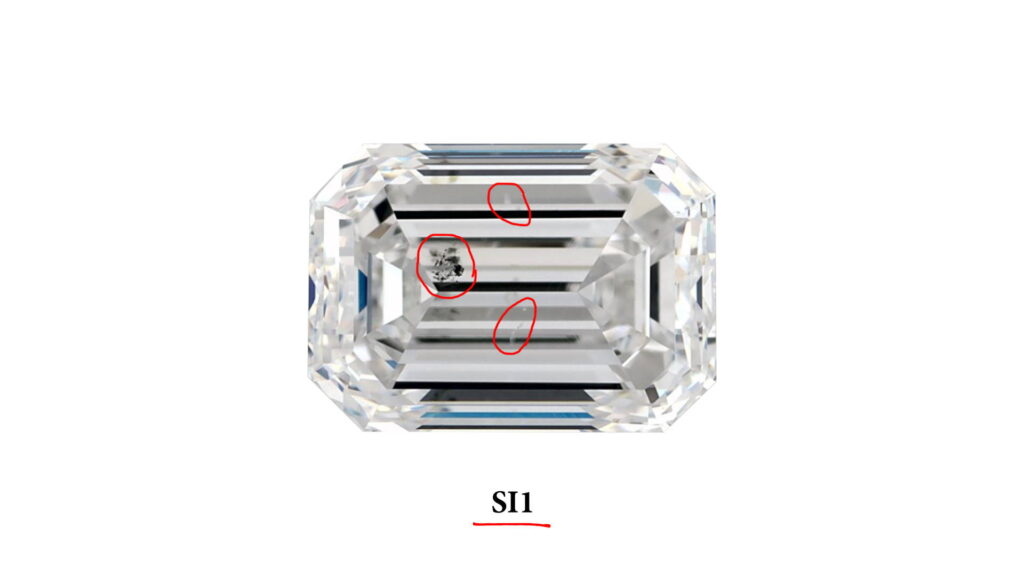An engagement ring purpose is to be worn daily and therefore you might not need a perfectly cleaned stone.
Actually, eye-cleaned stones (as we describe them in the trade) which means that without the help of a loupe you will not be able to see any inclusions, or slightly-included to the naked eye (that doesn`t disturb from their beauty) might be a good choice, because then you will be able to put more money on a cut, color or a carat weight.
I would say that best would be to avoid gemstones, in which a major inclusion, like a long crack (also called feather in the trade), is located right under the table (pic. below).
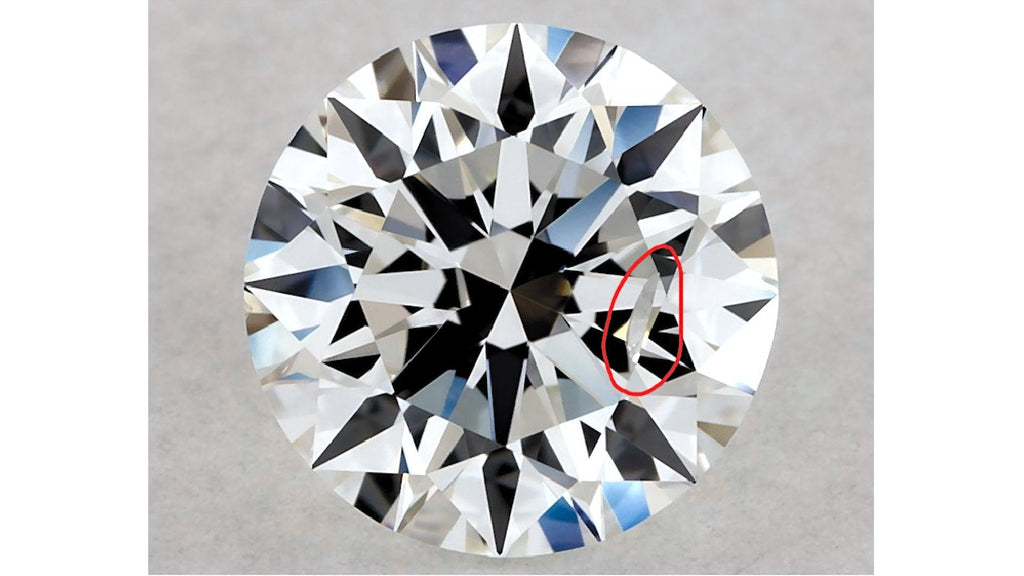
Big black spots or a group of many smaller ones in the same location can also be detrimental to the beauty of the stone.
So it`s better to avoid stones that exhibit such characteristics (pic. below)
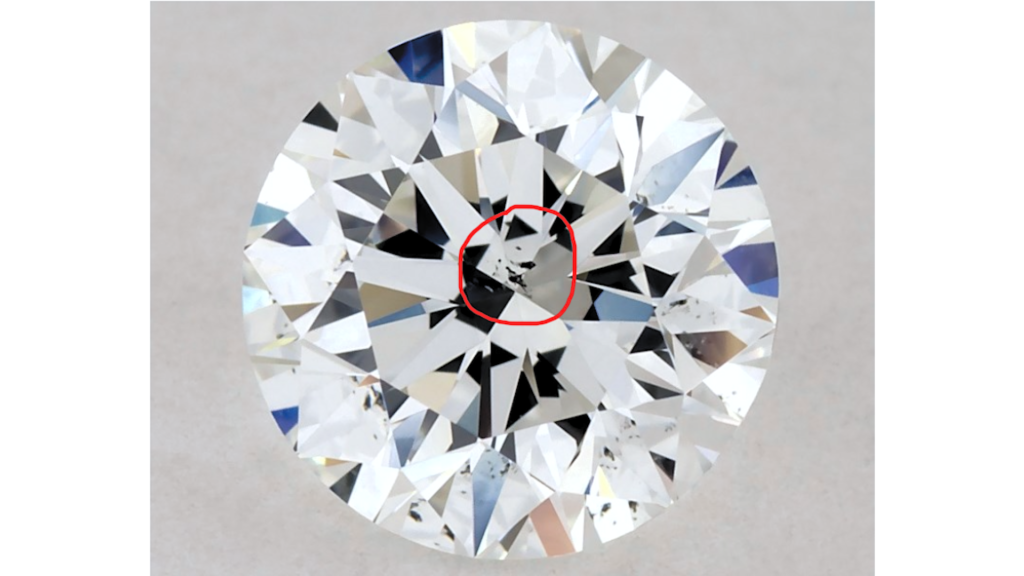
On the other hand, small and localized inclusions near the edge of the gemstone, also called *girdle* are much less of a problem. Since:

1. This area features many crown facets, and the reflections they create, along with the refraction caused by the faucets on the pavilion underneath the stone tend to keep the eye quite busy, literally help to camouflage some inclusions (pic. below).
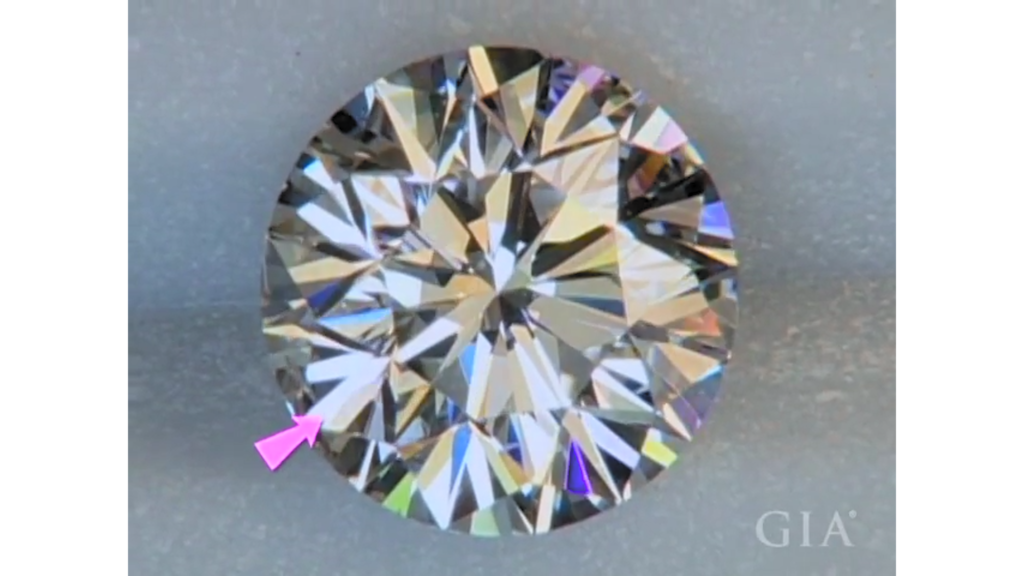
2. Depending on their position, these inclusions could be partially or completely hidden by a prong or other types of settings (pic. below).
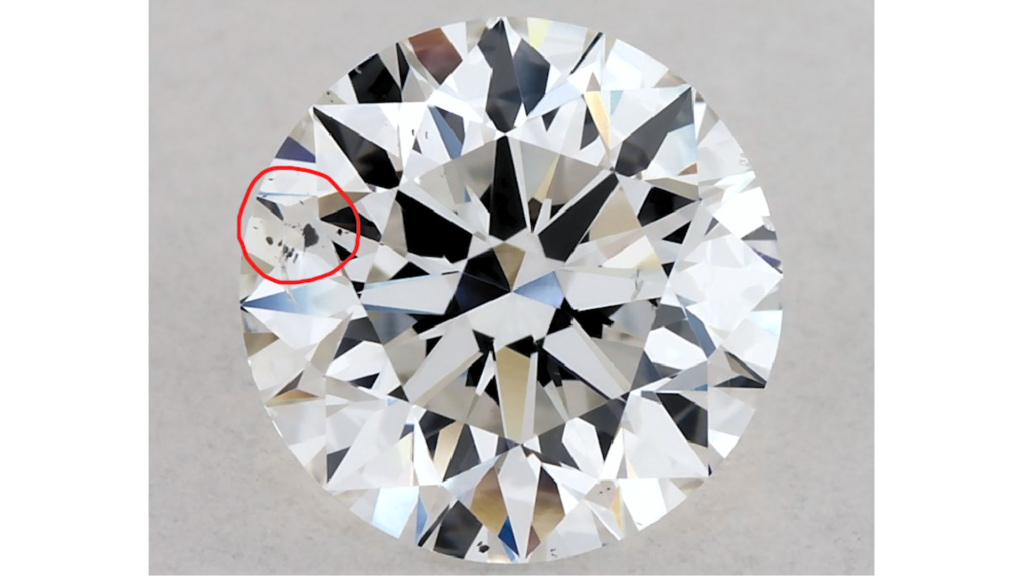
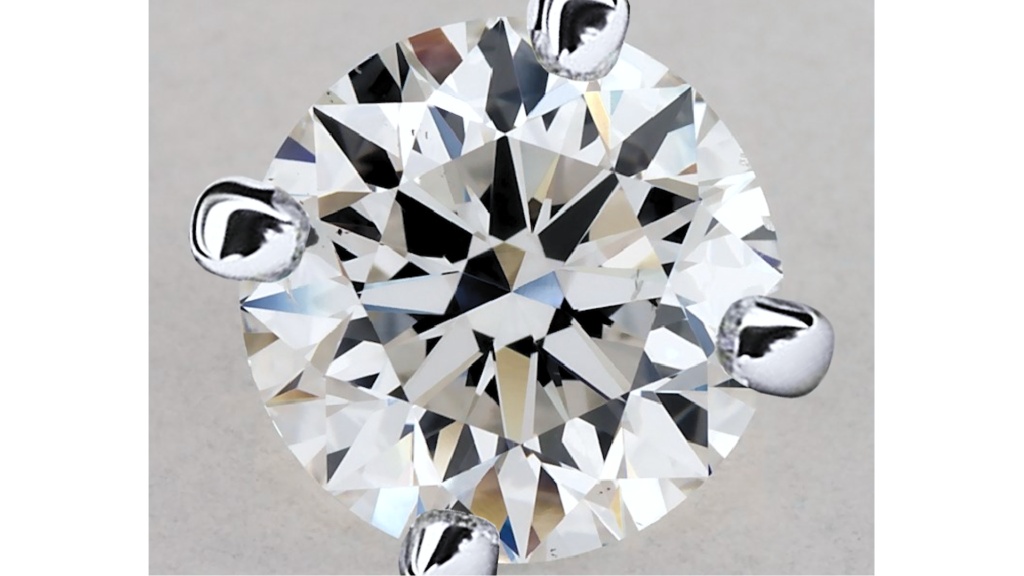
So for colorless diamonds, you want to stay in VS – SI1 clarity grades, just make sure your stone is eye-cleaned.
And, just a little side note here, if you are interested in buying a step-cut like an Asscher cut or an Emerald cut, you might want to stay in VS clarity grade, as inclusions are easier to see in these cuts. (pic. below)
